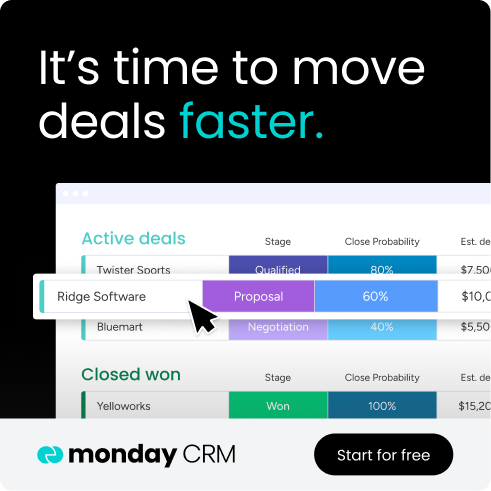Sales teams currently respond to leads within hours, but the competitive landscape requires engagement within minutes. While human representatives are focused on crafting perfect follow-ups, AI-powered systems are already qualifying prospects, booking meetings, and moving deals forward around the clock. The speed-to-lead gap is now about deploying intelligent systems that can engage, qualify, and nurture leads at scale without manual intervention.
AI lead follow up transforms prospect engagement by automating personalized conversations that adapt based on lead behavior. Unlike traditional email sequences that deliver the same static message, AI creates unique, context-aware interactions for each prospect, continuously learning from every conversation. This technology enables sales teams to respond instantly, qualify leads through intelligent discovery, and maintain consistent multi-channel engagement.
This guide details the steps required to implement AI lead follow up successfully. It covers the core components of AI systems, provides a step-by-step implementation framework, and explores best practices for maintaining the human connection essential for complex sales
Key takeaways
- Speed beats perfection in lead response: AI responds to leads within seconds, not hours, capturing interest at its peak when conversion rates are highest and immediately providing context-aware engagement.
- Build your 24/7 digital sales team: AI agents work around the clock, automatically qualifying prospects and booking meetings while human representatives focus on closing deals.
- Segment leads for personalized engagement: different audiences require distinct messaging; AI adapts conversations based on lead characteristics, behavior patterns, and industry to deliver highly relevant outreach.
- Integrate AI natively for simplicity: modern CRM platforms, such as monday CRM, integrate AI-powered email composition, timeline summaries, and automated lead scoring directly, eliminating complex setup or reliance on external tools.
- Measure what matters for continuous improvement: track key metrics like response time, qualification rates, and pipeline contribution to optimize your AI system and prove its return on investment (ROI).
What is AI lead follow up?
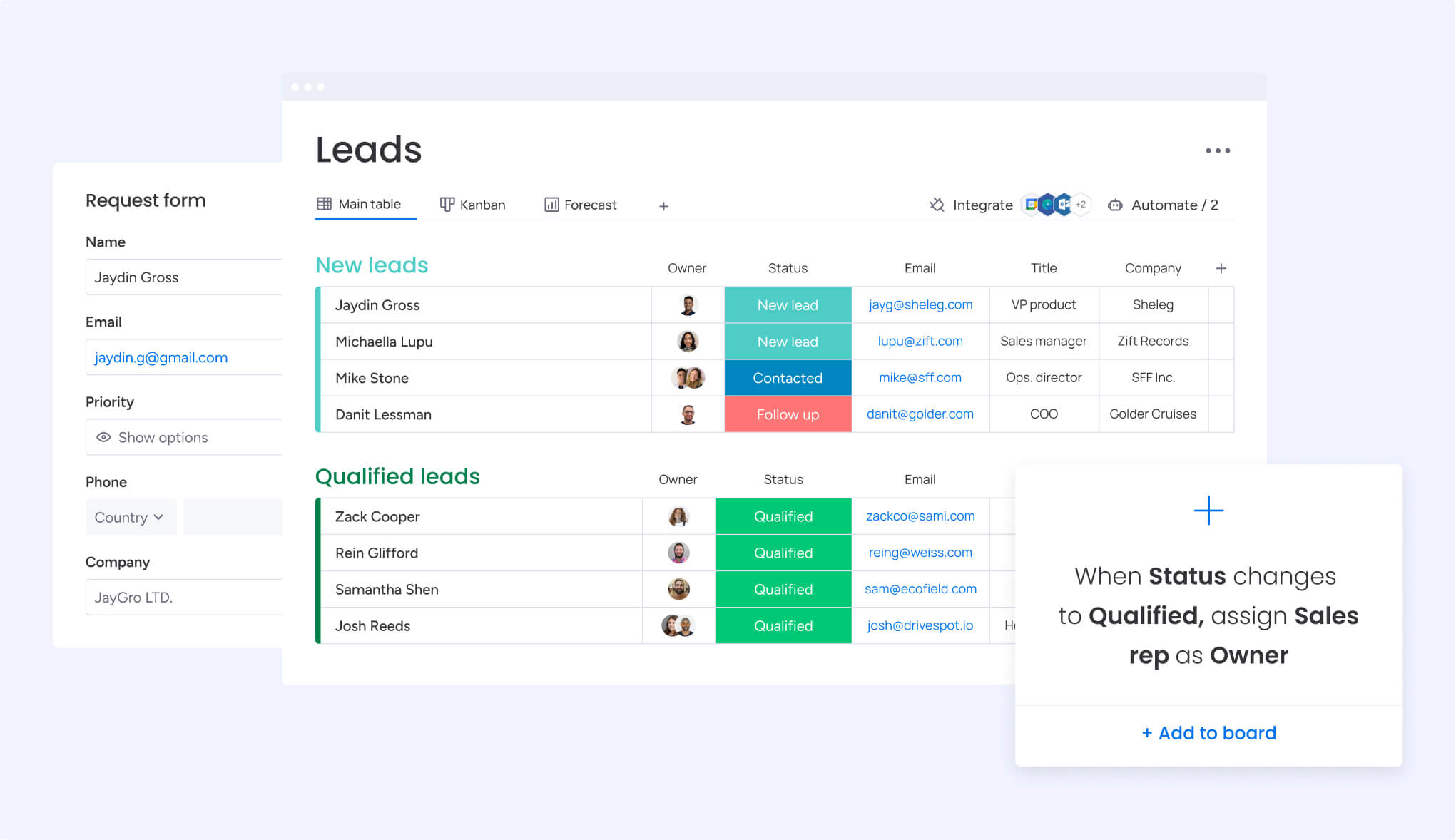
AI lead follow up puts your prospect engagement on autopilot. This means your sales team can respond to leads instantly, qualify them through intelligent conversations, and nurture relationships at scale — all without manual intervention.
Picture having a digital sales assistant that works around the clock, handles every task reliably, and ensures every follow-up is sent on time. It captures leads from websites, social media, and other channels, then engages them through personalized emails, calls, or messages based on their behavior and preferences. The AI learns from each interaction to deliver increasingly relevant communication that guides prospects toward a purchase decision.
AI-powered vs traditional automated follow up
Old-school automation blasts the same canned emails to everyone. Traditional automation sends the same pre-written sequences to everyone, while AI creates unique conversations for each lead.
Traditional systems are glorified ‘if-then’ machines: download an ebook, get sequence A.
AI-powered systems analyze multiple data points like browsing behavior, engagement patterns, and conversation history to determine the best message, timing, and channel for each individual lead. This creates experiences that feel personal rather than robotic.
| Aspect | Traditional automation | AI-powered follow up |
|---|---|---|
| Personalization | Generic templates with basic merge fields | Context-aware messages based on lead behavior |
| Response timing | Fixed schedules | Real-time optimization based on engagement |
| Conversation flow | Linear, one-size-fits-all | Adaptive based on lead responses |
| Learning capability | Static rules | Continuously improves from outcomes |
| Scalability | Limited by manual setup | Handles unlimited volume automatically |
Core components of AI lead follow up systems
Behind every great AI follow-up system is a stack of sophisticated tech working together. Understanding these components helps you evaluate which capabilities matter most for your sales process.
- Intelligent conversation management: forms the foundation. AI agents interpret lead responses, maintain context across multiple touchpoints, and guide prospects through qualification without losing track of previous interactions. AI capabilities, for instance, can summarize entire email threads and extract key information to keep conversations relevant.
- Behavioral trigger recognition: detects when leads take meaningful actions. The system identifies signals like email opens, link clicks, or return visits to pricing pages, then initiates appropriate follow up automatically.
- Adaptive content generation: creates messages tailored to each lead’s situation. Rather than selecting from templates, AI composes original responses that address specific questions and objections while maintaining your brand voice.
- CRM integration: ensures all interactions flow directly into your sales database. This eliminates manual data entry while giving sales teams complete visibility into every lead’s journey.
How AI agents manage lead conversations
When your AI jumps into a conversation, it’s doing way more than following a script. They begin each interaction by analyzing available data about the lead — their company size, industry, previous interactions, and expressed needs.
During conversations, AI agents ask qualifying questions naturally, provide relevant information, and identify buying signals, forming a crucial part of a lead management process. Throughout this process, platforms like monday CRM automatically log every interaction, ensuring a complete and accurate record of all communications.
The key difference from chatbots is contextual understanding. AI agents remember previous conversations, reference past interactions, and adapt their approach based on what they learn about each lead’s preferences and communication style.
Why implement AI lead follow up in 2026?
AI follow-up is no longer a luxury, it’s a necessity for staying competitive. Sales teams face increasing lead volumes, shorter attention spans, and higher expectations for personalized engagement. Manual follow up simply cannot keep pace.
The speed game is brutal. Leads expect responses within minutes, not hours or days. Yet most sales teams struggle to contact new leads quickly enough, especially outside business hours. This delay directly impacts conversion rates — businesses responding to leads within five minutes are 21 times more likely to qualify that lead compared to those who respond after 30 minutes.
AI doesn’t just fix your response time problem; it solves fundamental issues that have been holding your sales team back:
- Instant response capability: AI responds to inquiries within seconds, capturing interest at its peak.
- Consistent qualification: every lead receives the same thorough discovery process.
- Resource optimization: sales reps focus on qualified opportunities rather than cold outreach.
- Data accuracy: all interactions are logged automatically with complete context.
- Scalable growth: handle 10x more leads without adding headcount.
If you’re leading a mid-market sales team, AI gives you the consistency to hit your numbers month after month. Small businesses gain enterprise-level capabilities without enterprise costs. In fact, 78% of mid-market companies adopting AI for lead management reported handling at least three times more leads per sales rep while maintaining their current team size. Both benefit from having their CRM data always current and actionable.
Try monday CRM7 steps to build your AI lead follow up system
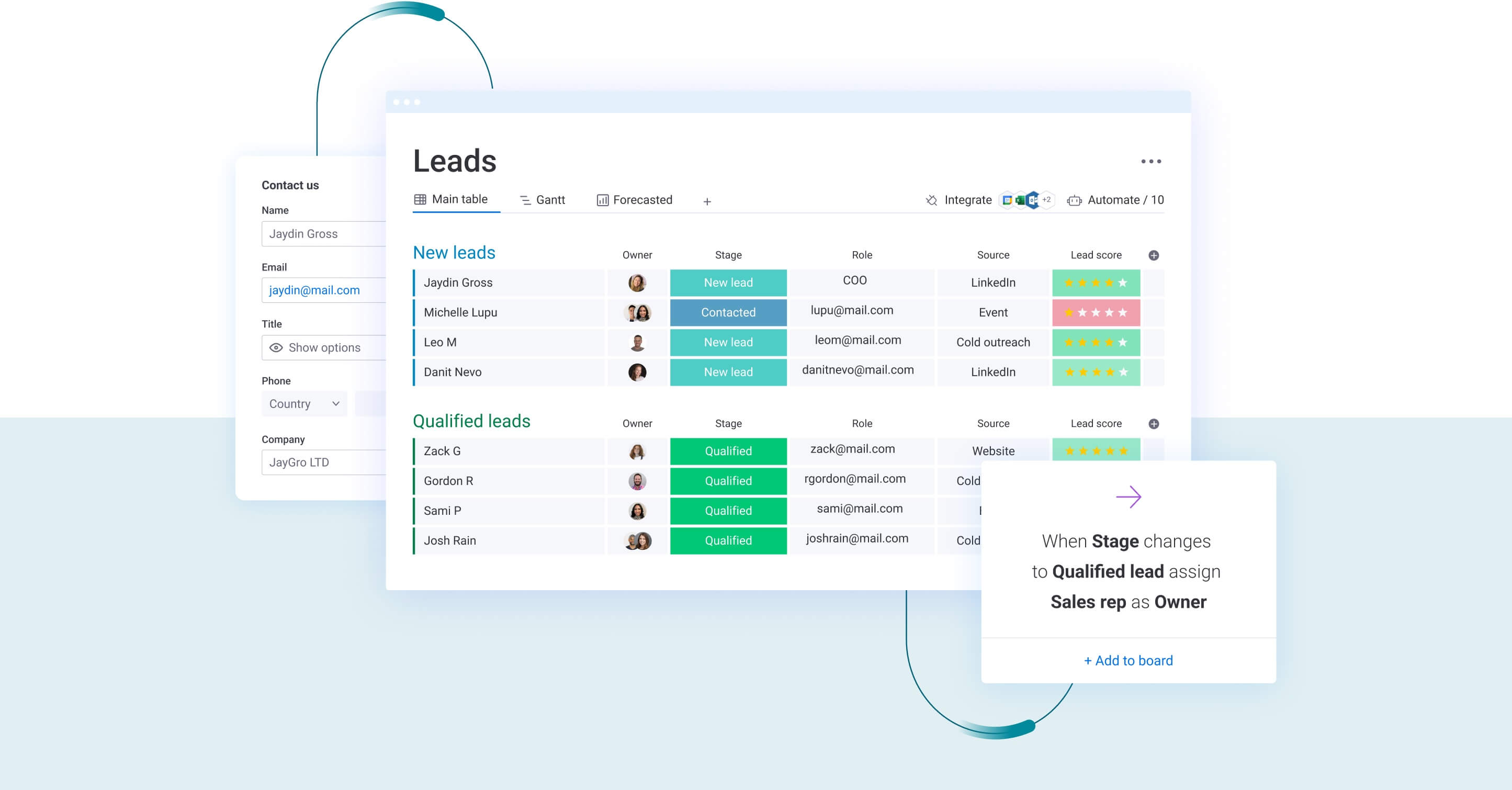
Step 1: define specific follow up objectives
First, nail down exactly what you want your AI to accomplish. These objectives guide every subsequent decision and help you measure success.
Think about what you need right now and where you want to be in a year. Consider targets like responding to all leads within two minutes, qualifying 80% of leads before human handoff, or increasing meeting booking rates by 30%. Document these goals and share them with your team to ensure alignment and incorporate a lead analytics dashboard for ongoing measurement.
Always link your goals to dollars and cents. If your goal is faster response times, connect that to conversion rate improvements. If you want a more accurate qualification, tie it to sales productivity metrics. This connection helps justify investment and track ROI.
Step 2: map your existing lead journey
Map out your entire sales journey, from first touch to closed deal. Identify where leads currently wait for responses, where they drop off, and which manual tasks consume the most time, evaluating if you need lead tracking software to streamline your approach.
Begin at the beginning: where do your leads come from? Website forms? Social? Events? Referrals? Note how quickly each receives follow up today. Track the typical path through qualification, nurturing, and handoff to sales. Pay special attention to gaps where leads go cold or communication breaks down.
This detective work exposes exactly where automation can save you. You might discover that web leads wait six hours for first contact, or that 40% of qualified leads never receive proper handoff notes. These insights shape your AI implementation priorities.
Step 3: set up smart automation triggers
Next, decide what sparks your AI into action. These triggers should reflect actual buying behaviors and sales readiness indicators.
Configure triggers based on meaningful actions:
- Form submissions: immediate outreach for demo requests.
- Content engagement: follow up after downloading key resources.
- Behavioral patterns: re-engagement when leads return to pricing pages.
- Time-based rules: nurture sequences for longer sales cycles.
With modern solutions like monday CRM, you can build powerful automations using a code-free interface. You can create automations that assign leads, send personalized emails, and update deal stages based on any combination of conditions.
Step 4: design personalized AI sequences
Design conversations that flex based on who you’re talking to and where they are in their journey. Your AI should recognize whether someone is researching options or ready to buy, then adjust its approach accordingly.
Don’t use one-size-fits-all messaging. New prospects need education and trust-building. Returning visitors want specific answers. Enterprise buyers expect detailed technical discussions. Each path should feel natural and valuable to that audience.
Know when to tag in a human. Complex technical questions, pricing negotiations, and emotional objections often require human expertise. The AI should recognize these moments and transition smoothly while preserving context.
Step 5: connect AI to your current CRM
Connecting AI to your CRM changes everything. Every conversation, insight, and action should flow seamlessly into your existing workflows.
AI is nativized within the core platform. This integration means features such as AI-powered email composition and timeline summaries function directly with existing data, removing the need for complex integrations or data synchronization.
Make sure your CRM records everything your AI does. Set up fields for conversation summaries, qualification scores, and next steps. Create views that show which leads are being handled by AI versus human reps. This visibility helps managers track performance and identify coaching opportunities.
Step 6: train AI on your sales playbook
Your AI needs to sell like your best reps and sound like your brand. This requires training it on your successful scripts, common objections, and qualification criteria.
Provide your AI with:
- Successful email templates: have driven responses.
- Discovery questions: uncover real needs.
- Objection handling frameworks: for common concerns.
- Competitive positioning: differentiates your solution.
- Qualification criteria: identify ideal customers.
Regular refinement keeps your AI current. Review conversation logs weekly to identify areas for improvement. Update responses based on what’s working in human conversations. This continuous learning ensures your AI stays aligned with market changes.
Step 7: deploy and track performance
Launch your AI follow up system with a controlled rollout. Start with one lead source or segment to validate your setup before expanding.
Monitor key metrics from day one:
- Response time: how quickly AI engages new leads?
- Engagement rate: percentage of leads that respond to AI outreach.
- Qualification accuracy: how well AI identifies sales-ready leads?
- Conversion rate: leads that progress to meetings or opportunities.
- Handoff quality: sales rep satisfaction with AI-qualified leads.
Use these metrics to optimize continuously. If engagement rates are low, refine your messaging. If qualification accuracy needs improvement, adjust your criteria. The goal is steady improvement toward your defined objectives.
AI lead follow up best practices
Successful AI lead follow up requires more than just technology. These practices ensure your system delivers value while maintaining the human connection that drives sales.
Segment leads for targeted engagement
Lead segmentation enables AI to deliver relevant experiences to different audience types. A well-structured CRM for lead generation also dovetails with segmentation to unify your approach. Group leads by characteristics that influence their buying journey and communication preferences.
Effective segmentation considers multiple factors. Industry determines the language and examples you use. Company size influences the complexity of your solution positioning. Lead source indicates their awareness level and readiness to buy. Behavioral data reveals their specific interests and concerns.
Configure your AI to recognize these segments automatically. When a lead from healthcare submits a form, they should receive healthcare-specific examples. When an enterprise prospect engages, the AI should discuss scalability and integration.
Leverage multi-channel communication
Modern buyers engage across multiple channels. To ensure maximum reach and relevance, your AI follow-up system should be designed to meet them wherever they prefer to communicate. Each channel serves a specific purpose in a comprehensive follow-up strategy:
- Email: remains the foundational communication method for detailed messaging.
- SMS: delivers urgent or time-sensitive messages, often achieving high open rates (e.g., $98%$ open rates).
- LinkedIn/social media: reaches B2B decision-makers within their professional context.
- Phone calls: creates immediate, direct connection for high-value or high-priority leads.
Messaging must be carefully coordinated across these channels to avoid overwhelming leads. For instance, if a prospect does not respond to an email, a follow-up via SMS or a connection on LinkedIn can be attempted before a phone call. Platforms offering centralized dashboards can track all these interactions in one timeline, giving complete visibility regardless of the channel used.
Maintain the human connection
AI excels at speed and consistency, but human connection still drives complex sales. Design your system to enhance rather than replace human relationships.
Set clear handoff criteria for human intervention:
- Complex technical requirements: need expert consultation.
- Emotional objections: requiring empathy and reassurance.
- Price negotiations: where flexibility matters.
- Strategic accounts: deserving white-glove treatment.
Ensure smooth transitions by providing context. When AI hands off a lead, the human rep should see the complete conversation history, identified needs, and recommended next steps. This continuity makes the transition invisible to the lead.
Ensure data privacy compliance
AI lead follow up must respect privacy regulations and build trust through transparency. This means obtaining proper consent, protecting data, and giving leads control over their information.
Implement privacy safeguards throughout your system. Obtain explicit consent before automated outreach. Provide clear opt-out mechanisms in every message. Store data securely and limit access to authorized team members. Document your data handling practices for audit purposes.
Regular compliance reviews keep you current with evolving regulations. GDPR, CCPA, and industry-specific rules all impact how you can use AI for lead engagement. Working with platforms that prioritize security and compliance reduces your risk exposure.
Try monday CRM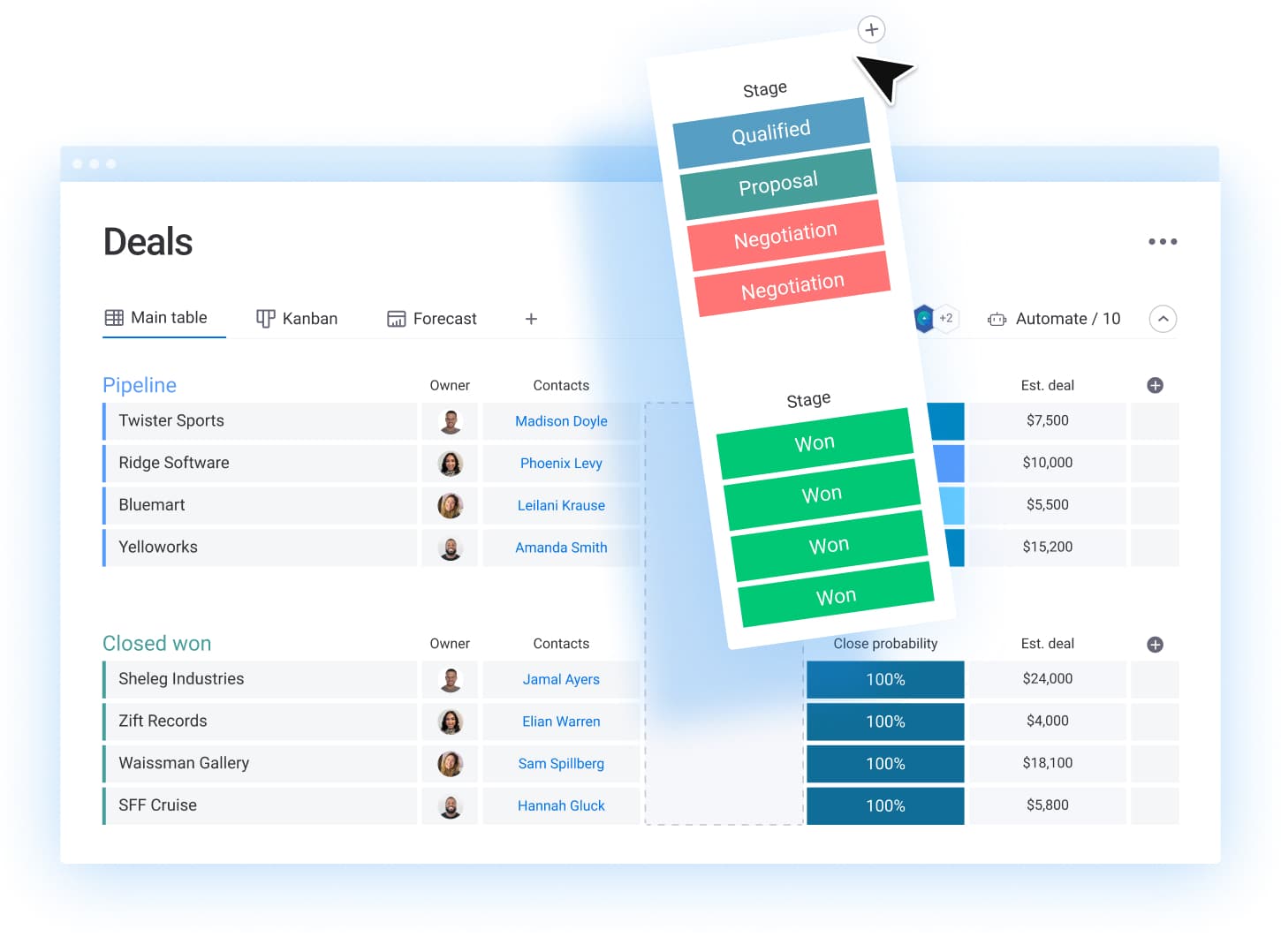
5 key lessons for successful AI lead follow up
Understanding common pitfalls helps you avoid costly mistakes and maximize your AI investment.
1. Over-automating customer interactions
Excessive automation creates impersonal experiences that damage relationships. This happens when organizations try to automate every touchpoint without considering emotional intelligence and human judgment needs.
The solution is strategic automation. Automate repetitive tasks like initial response, basic qualification, and appointment scheduling. Reserve human interaction for relationship building, complex problem-solving, and closing conversations. Define clear escalation triggers so AI knows when to involve humans.
2. Implementing a strategic lead scoring system
A robust lead scoring system enables AI to prioritize high-value opportunities and allocate resources effectively, ensuring the sales team focuses only on the most promising prospects.
- Implement multi-factor scoring: lead scoring must consider demographic fit, behavioral engagement, and buying signals simultaneously.
- Automate prioritization: the AI should automatically score leads based on these criteria and prioritize follow-up accordingly, sending high-score leads to immediate attention and lower scores to nurture campaigns.
- Customize your model: use customizable fields and formulas within your CRM to easily build scoring models that accurately reflect your ideal customer profile
3. Neglecting performance analytics
Many teams deploy AI but never measure its impact. Without analytics, you can’t identify problems or prove ROI.
Track performance metrics at every stage. Monitor speed-to-lead to ensure rapid response. Measure qualification accuracy to validate your criteria. Analyze conversion rates by segment to optimize messaging. Set up dashboards that visualize these metrics in real-time so you can spot trends and make quick adjustments.
4. Rushing team adoption
Rapid implementation without proper training leads to resistance and underutilization. Sales teams need time to understand and trust AI systems.
Phase your rollout thoughtfully. Start with eager early adopters who can champion the system. Provide hands-on training that shows how AI makes their jobs easier, not obsolete. Share success stories and wins to build momentum. Address concerns directly and show how AI enhances rather than replaces their skills.
5. Ignoring workflow redesign
Bolting AI onto existing processes creates friction and limits value. Your workflows need redesign to fully leverage AI capabilities.
Map your ideal future state with AI integrated throughout. Eliminate redundant steps that AI handles automatically. Redefine roles to focus on high-value activities. Update your CRM fields and stages to capture AI-generated insights. This redesign ensures AI enhances rather than complicates your sales process.
How agentic AI revolutionizes lead follow up
Agentic AI systems transform sales by deploying digital workers that operate autonomously, manage complex workflows, and continuously learn, driving fundamental changes in sales operations:
- Evolution to digital workers: agentic AI represents a shift from assistants (following instructions) to digital workers (making independent decisions and managing entire workflows).
- Handles complex conversations: digital workers understand context, nuance, and buying signals, enabling them to handle complex sales conversations that previously required human judgment.
- Unprecedented autonomy: these systems make independent decisions on lead prioritization, messaging, and when to escalate to humans.
- Continuous learning and improvement: the AI analyzes successful conversations, tests different approaches, and automatically adopts winning patterns, ensuring performance improves over time.
- Creates a 24/7 digital sales force: digital workers scale instantly with demand and operate continuously across time zones, ensuring no opportunity is missed.
- Shifts management focus: management shifts from monitoring human activity to optimizing AI outcomes by coaching the AI (refining its knowledge and criteria), allowing human teams to concentrate on strategic selling.
- Example of evolution: platforms like monday CRM offer AI SDR Agents that conduct discovery calls, qualify prospects, book meetings, and provide detailed summaries for sales representatives, working 24/7.
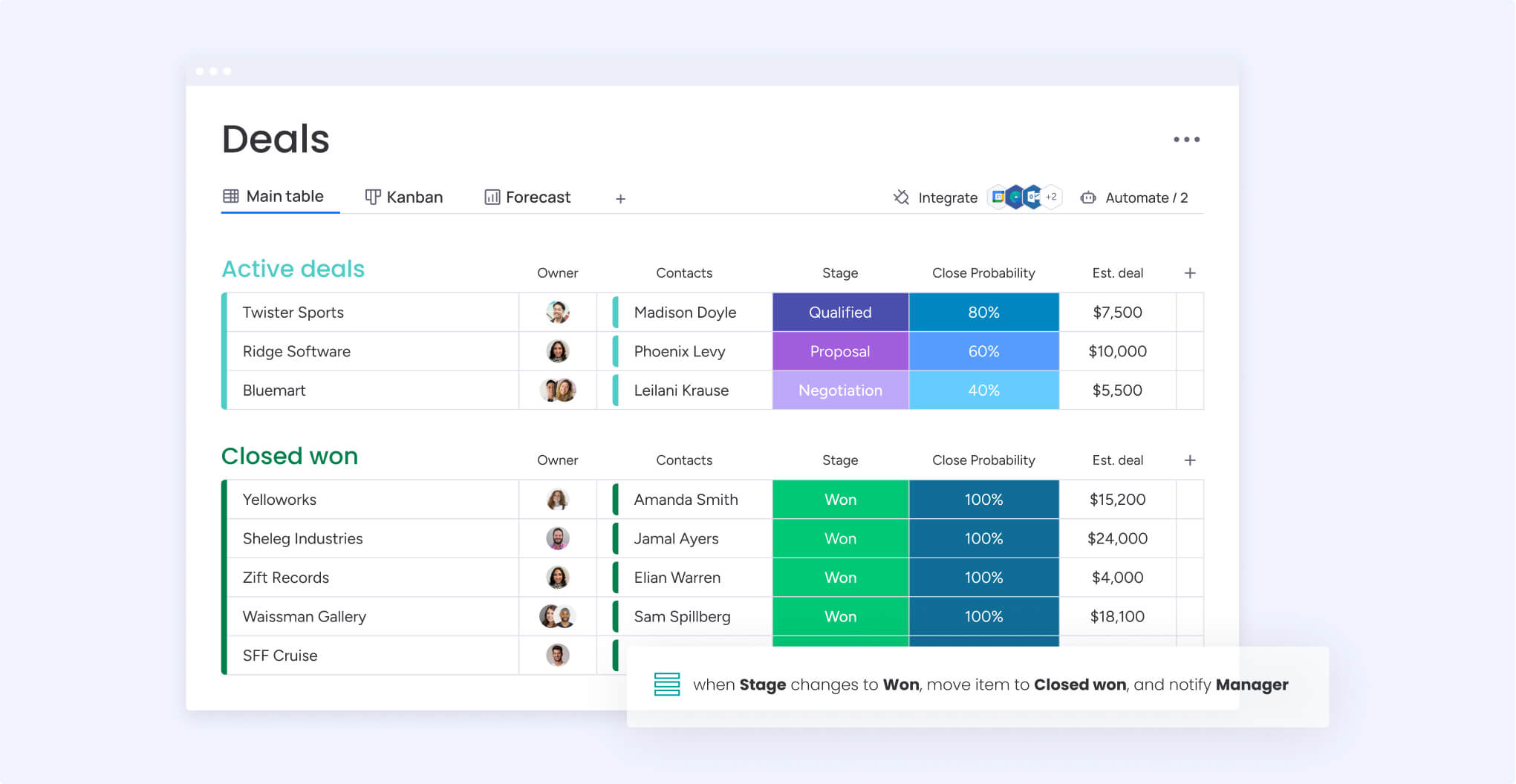
How to measure and optimize AI lead follow up performance
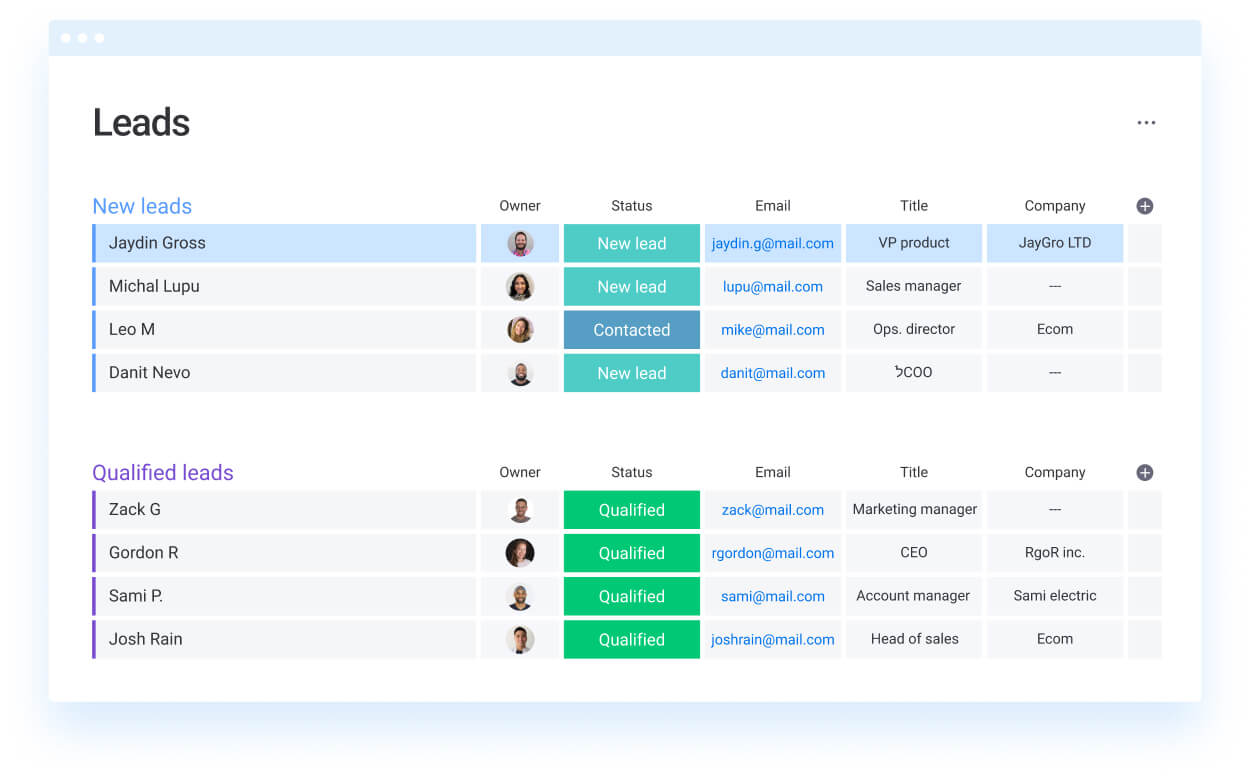.jpg)
Essential metrics for success
Measuring AI performance requires metrics that reflect both efficiency and effectiveness. These KPIs guide optimization and demonstrate value to stakeholders.
Focus on metrics that directly impact revenue:
- Response time: average time from lead creation to first contact.
- Qualification rate: percentage of leads that meet your criteria.
- Engagement rate: proportion of leads that respond to AI outreach.
- Meeting acceptance rate: qualified leads that agree to sales meetings.
- Pipeline contribution: revenue value of AI-qualified opportunities.
- Cost per qualified lead: total cost divided by qualified lead volume.
Track leading and lagging indicators. Leading indicators like response time predict future performance. Lagging indicators like closed deals validate your approach. Together, they provide complete visibility into AI effectiveness.
A/B test your AI conversations
Testing different approaches reveals what resonates with your audience. AI makes testing easy by automatically splitting traffic and measuring results.
Test elements that impact engagement:
- Opening messages: professional versus conversational tone.
- Value propositions: feature-focused versus outcome-focused.
- Question sequences: open-ended discovery versus specific qualification.
- Call-to-action timing: immediate meeting request versus gradual nurturing.
- Follow-up frequency: daily versus every few days.
Run tests with sufficient volume for statistical significance. Document winning variations and apply them across all sequences. Remember that different segments may respond to different approaches, so test within specific audiences.
Continuous enhancement strategies
Optimization is an ongoing process. Regular refinement ensures your AI stays effective as markets, competitors, and buyer preferences evolve.
Schedule monthly reviews of AI performance. Analyze conversation transcripts to identify confusion points or missed opportunities. Review lost deals to understand where AI could have better qualified or nurtured leads. Study successful conversions to replicate winning patterns.
Gather feedback from multiple sources. Sales reps can highlight gaps in lead qualification. Prospects might mention what convinced them to engage. Customer success teams see which leads become the best customers. This 360-degree feedback drives meaningful improvements.
Update your AI’s knowledge base regularly. Add new product features, competitive differentiators, and market insights. Refine objection handling based on recent customer conversations. Adjust qualification criteria as you learn more about ideal customer characteristics.
Transform lead follow up with monday CRM
For the core challenges of AI lead follow up, monday CRM provides practical, accessible features that any team can implement quickly.
The platform’s AI capabilities integrate directly with your existing CRM data. AI-powered email composition helps craft personalized messages based on lead context. Timeline summaries instantly synthesize entire conversation histories into actionable insights. Automated lead scoring and assignment ensure the right leads reach the right reps at the right time.
- AI Blocks enable custom automation: build AI-powered workflows that extract information from documents, assign labels based on content, or generate personalized responses.
- Native email integration: send, track, and analyze email campaigns directly from your CRM with AI assistance for composition and timing.
- Intelligent lead routing: automatically assign leads based on territory, expertise, or availability with AI-optimized distribution.
- Conversation intelligence: every interaction is captured and summarized, providing complete context for handoffs and follow-ups.
What sets monday CRM apart is its transparency and control. You have full visibility into the AI’s actions and can adjust its behavior instantly, providing straightforward, actionable automation that enhances your team’s capabilities.
The platform grows with your needs. Start with basic email automation and expand to full AI-powered lead engagement as you’re ready. No complex setup, no technical expertise required. Just practical AI that helps your team respond faster, qualify better, and close more deals.
Frequently asked questions
How long does AI lead follow up implementation take?
AI lead follow up implementation typically takes two to four weeks depending on your system complexity and integration needs. Basic email automation can go live in days while full conversation AI may require additional training time.
What's the typical investment for an AI lead follow up platform?
Investment for AI lead follow up tools ranges from $50-500 per user monthly based on capabilities and volume. Consider both software costs and time savings when calculating ROI.
Will AI follow up work with my existing CRM platform?
Most AI follow up tools integrate with popular CRMs through APIs or native connections. Platforms with built-in AI capabilities like monday CRM eliminate integration complexity entirely.
How do AI agents differ from standard chatbots?
AI agents understand context, learn from interactions, and make independent decisions while chatbots follow scripted responses. Agents handle complex multi-turn conversations that adapt based on lead responses.
What data volume is needed for effective AI training?
Effective AI training typically requires 100-500 example conversations to establish baseline performance. Performance improves continuously as the system processes more interactions.
How does AI handle complex lead inquiries?
AI handles complex inquiries by recognizing when human expertise is needed and escalating appropriately. The system provides full context to human reps ensuring smooth handoffs for technical or nuanced discussions.
 Get started
Get started 

